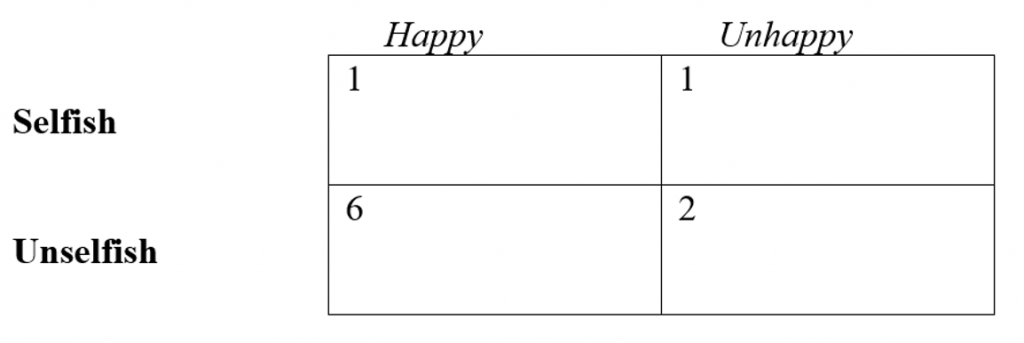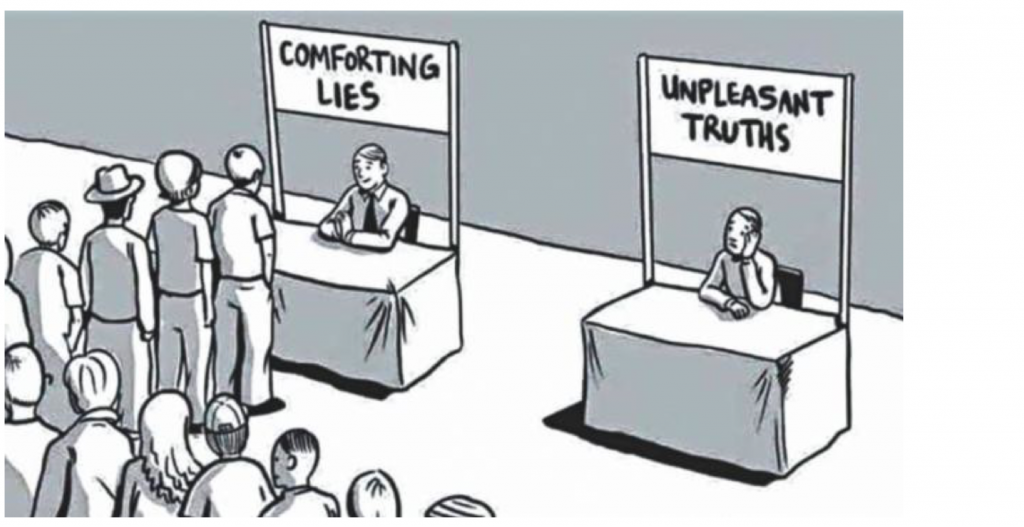Top Artifact Three
In reviewing the artifacts for modules 11-14, the artifact that engaged me most was the artifact for Module 11. I liked this module the most because I was able to directly connect the activity to people in my life. What I learned is that the happier a person is more likely unselfish unselfish. Also, this activity helped me gain a different perspective related to some of the people in my life.
In addition, this activity expanded my knowledge on prosocial behavior. For example, I learned that happiness is a factor that increases prosocial behavior. The happier a person is, the more likely a person is to be selfless. As a result, a selfless person is more motivated to help another person.
I’ve chosen to use a picture of my matrix results as a representative visual of this artifact, as this picture supports the idea that happier people are less selfish.

Top Artifact Two
The artifact that engaged me the most was the artifact from Module 7. I liked it because it helped me learn more about myself. When initially reading about cognitive dissonance, I was under the impression that I likely didn’t experience it at all. However, I was wrong. I learned that I experience cognitive dissonance just as much as others.
This artifact also helped me understand that everyone experiences cognitive dissonance. I also was able to experience, firsthand, the process the brain takes to reconcile the mismatch between behavior and attitude. Lastly, I realized that in the process of trying to reduce discomfort, caused by cognitive dissonance, we can oftentimes deceive ourselves.
Below is a visual representation of cognitive dissonance. I chose this image because its a good example of how we try to reduce discomfort when a mismatch occurs between our attitude and behavior.
